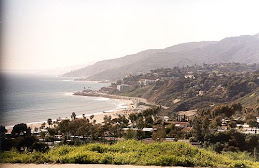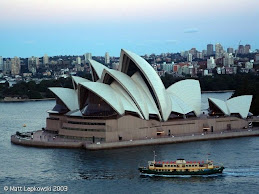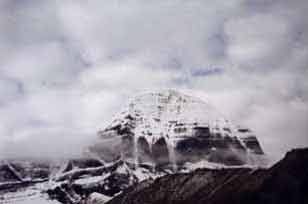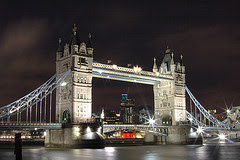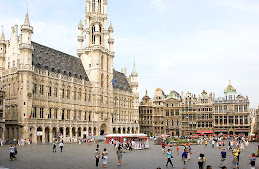March 7, 2010
The media can both be the poodle and the watchdog. But of late, it is becoming more of the poodle than the watchdog. The Government of India in a recent advisory to TV channels directed them to avoid giving undue coverage to terrorists and terror groups and cover such events with great responsibility and sensitivity. The advisory, in fact, was long overdue.
Every terror attack has, of late, unfortunately become a kind of veritable celebration and overkill for most channels. So much so that the other day when some news channels telecast the CCTV footage of the German Bakery blast, a special court for the Maharashtra ATS ordered: "No electronic media should publish, display or telecast any footage or coverage of the incident dated February 13, 2010 or those before the incident that has come on the CCTV of German Bakery and Hotel ‘O’, which would lead to the disclosure of identity of witnesses in the case." The media, especially the electronic, has been indiscriminately featuring terrorists, with their family history, interviews and the so-called Karachi plot to destroy India with unbelievable fan-fare and a persistent obstinacy. Of equal concern is the obsessed regularity with which soft stories on the D-Company are telecast on certain channels. All that the terrorists want is publicity and speculation about their motives, missions and methods. That is the way these underground outlaws operate and try to advance their agenda, if they have one.
It is easy to guess the provocation for the channels to devote so much of their news time to those trivia which most reputed media persons have often denounced. The fact however remains that the institutions headed by these personalities do not even make a pretence of playing by the rule.
This brings us to the subject of the business of selling news space. After liberalisation, the corporate interest has come to dominate politics, policy format and media coverage. As a consequence, matter that once used to come to us as press notes, now get splashed on the front pages as exclusive. It is a propaganda that often comes as a breaking news. The adage that news is that somewhere somebody wants to hide, is no more a dictum for the post-globalisation media. In this context, the advice of the Editors Guild of India to the Election Commissioner of India to take a strong action against both politicians and media persons who violate the disclosure norms of election expenditure and publicity failed to generate the desired public interest. Such issues are often buried somewhere inside between advertisements in a single column and go unnoticed. A travesty of profitability becoming the primary concern of information dissemination. The media honchos lose the propriety and restraint and become willing tools in the hands of business lobbies.
The latest example of the controversy over the Environment Minister’s denial of permission to Bt. brinjal illustrates this point very well. A section of the media has gone overboard criticising the decision and denouncing the minister who was so far hailed as a crusader for reform. Overnight, Jairam Ramesh has become anti-reform, anti-science and standing in the way of genetic research and promotion of biotechnology. Conversely, lo and behold, Agriculture Minister Sharad Pawar is being projected a man of great vision, modern mind and who is agitated so much about the damage the non-introduction of GM seeds would do to Indian agriculture.
Pawar is a past master in taking up such MNC causes. Remember Enron? It is not a secret how sometime in the mid-1990s Rebecca Mark, a striking 30-something honey blonde Enron Lady took our politicians for a royal ride. Then Pawar had argued for Enron with the same vehemence as he is now pleading the case of Bt. brinjal. And a section of the Indian media lapped up every word the Enron Lady said to make a grand entry into the Indian power sector. The tax-payer had to shell out billions of dollars for the sovereign guarantee for the so-called fast track power project that he promoted in Maharashtra as Chief Minister.
Now, Pawar, according to reports, wrote to the Prime Minister, "the off-the-cuff nature of the Bt. brinjal decision" threatened to "set the clock back" on agricultural growth by disheartening scientists and companies investing in research and resources in GM technology. What moral indignation! The devil perhaps is in the detail. And a section of the media has taken up this fight. We have been open about our resistance to GM food. And it was the result of persistent and informed campaign by the activists and scientists that the Environment Minister was forced to take a second, hard look at the propaganda and pressure by the Bt. brinjal lobby. The problem is how to separate news from propaganda and create an enlightened public opinion.
Every terror attack has, of late, unfortunately become a kind of veritable celebration and overkill for most channels. So much so that the other day when some news channels telecast the CCTV footage of the German Bakery blast, a special court for the Maharashtra ATS ordered: "No electronic media should publish, display or telecast any footage or coverage of the incident dated February 13, 2010 or those before the incident that has come on the CCTV of German Bakery and Hotel ‘O’, which would lead to the disclosure of identity of witnesses in the case." The media, especially the electronic, has been indiscriminately featuring terrorists, with their family history, interviews and the so-called Karachi plot to destroy India with unbelievable fan-fare and a persistent obstinacy. Of equal concern is the obsessed regularity with which soft stories on the D-Company are telecast on certain channels. All that the terrorists want is publicity and speculation about their motives, missions and methods. That is the way these underground outlaws operate and try to advance their agenda, if they have one.
It is easy to guess the provocation for the channels to devote so much of their news time to those trivia which most reputed media persons have often denounced. The fact however remains that the institutions headed by these personalities do not even make a pretence of playing by the rule.
This brings us to the subject of the business of selling news space. After liberalisation, the corporate interest has come to dominate politics, policy format and media coverage. As a consequence, matter that once used to come to us as press notes, now get splashed on the front pages as exclusive. It is a propaganda that often comes as a breaking news. The adage that news is that somewhere somebody wants to hide, is no more a dictum for the post-globalisation media. In this context, the advice of the Editors Guild of India to the Election Commissioner of India to take a strong action against both politicians and media persons who violate the disclosure norms of election expenditure and publicity failed to generate the desired public interest. Such issues are often buried somewhere inside between advertisements in a single column and go unnoticed. A travesty of profitability becoming the primary concern of information dissemination. The media honchos lose the propriety and restraint and become willing tools in the hands of business lobbies.
The latest example of the controversy over the Environment Minister’s denial of permission to Bt. brinjal illustrates this point very well. A section of the media has gone overboard criticising the decision and denouncing the minister who was so far hailed as a crusader for reform. Overnight, Jairam Ramesh has become anti-reform, anti-science and standing in the way of genetic research and promotion of biotechnology. Conversely, lo and behold, Agriculture Minister Sharad Pawar is being projected a man of great vision, modern mind and who is agitated so much about the damage the non-introduction of GM seeds would do to Indian agriculture.
Pawar is a past master in taking up such MNC causes. Remember Enron? It is not a secret how sometime in the mid-1990s Rebecca Mark, a striking 30-something honey blonde Enron Lady took our politicians for a royal ride. Then Pawar had argued for Enron with the same vehemence as he is now pleading the case of Bt. brinjal. And a section of the Indian media lapped up every word the Enron Lady said to make a grand entry into the Indian power sector. The tax-payer had to shell out billions of dollars for the sovereign guarantee for the so-called fast track power project that he promoted in Maharashtra as Chief Minister.
Now, Pawar, according to reports, wrote to the Prime Minister, "the off-the-cuff nature of the Bt. brinjal decision" threatened to "set the clock back" on agricultural growth by disheartening scientists and companies investing in research and resources in GM technology. What moral indignation! The devil perhaps is in the detail. And a section of the media has taken up this fight. We have been open about our resistance to GM food. And it was the result of persistent and informed campaign by the activists and scientists that the Environment Minister was forced to take a second, hard look at the propaganda and pressure by the Bt. brinjal lobby. The problem is how to separate news from propaganda and create an enlightened public opinion.
Related stories:

